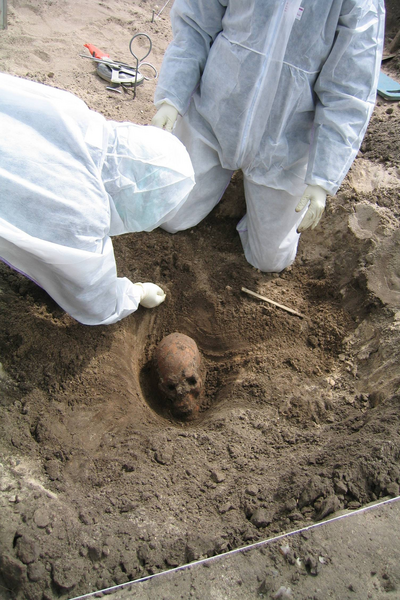Analysis of DNA from the remains of ancient humans provides valuable insights into such important questions as the origin of genetic diseases, migration patterns of our forefathers and tribal and family patterns.
Unfortunately, severe problems connected with the retrieval and analysis of DNA from ancient organisms (like the scarcity of intact molecules) are further aggravated in the case of ancient humans. This is because of the great risk of contamination with abundant DNA from modern humans. Humans, then, are involved at all steps, from excavation to laboratory analyses. This means that many previous results have subsequently been disputed as attributed to the presence of contaminant DNA, and some researchers even claim that it is impossible to obtain reliable results with ancient human DNA.
Using freshly sampled material from ten Viking skeletons from around AD 1,000, from a non-Christian burial site on the Danish island of Funen, Dissing and colleagues showed that it is indeed possible to retrieve authentic DNA from ancient humans.

Wearing protective suits, the researchers removed the teeth from the jaw at the moment the skeletons were unearthed when they had been untouched for 1,000 years. The subsequent laboratory procedures were also carefully controlled in order to avoid contamination.
Analysis of the Viking DNA showed no evidence of contamination with extraneous DNA, and typing of the endogenous DNA gave reproducible results and showed that these individuals were just as diverse as contemporary humans. A reliable retrieval of authentic DNA opens the way for a valuable use of prehistoric human remains to illuminate the genetic history of past and extant populations.
Citation: Melchior L, Kivisild T, Lynnerup N, Dissing J (2008) Evidence of Authentic DNA from Danish Viking Age Skeletons Untouched by Humans for 1,000 Years. PLoS ONE 3(5): e2214. doi:10.1371/journal.pone.0002214


